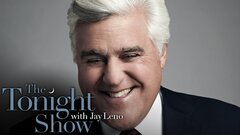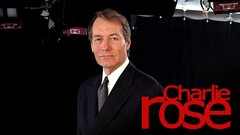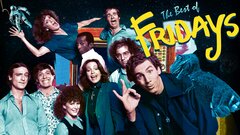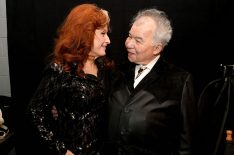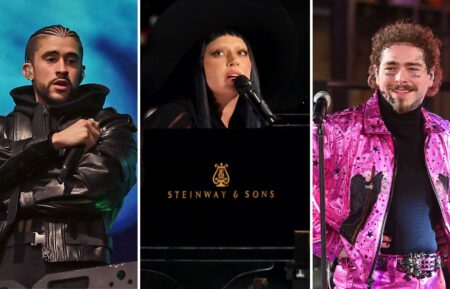A double rarity in the music business, in that she was both a white woman who played the blues, as well as an artist who parlayed her love of traditional American music into a platinum-selling, multi-Grammy Award-winning career, Bonnie Raitt was a much-beloved musician whose soulful voice and nimble fretwork brought sass, class and honesty to such hit songs as "Nick of Time," "The Thing Called Love," "Something To Talk About" and countless others.
The daughter of Broadway musical star John Raitt, she debuted in the late 1960s as part of the blues revival scene, and shared the stage with some of the giants of the medium, including Muddy Waters and John Lee Hooker. Raitt parlayed that priceless education into her own work, which drew critical acclaim throughout the 1970s and 1980s but relatively small album sales. However, she achieved her long-overdue breakthrough in 1989 with Nick of Time, which earned three Grammys and launched her into superstar status.
A dedicated political activist as well as a powerful musician, Raitt used her newfound stardom to support countless organizations in the 1990s and 21st century while never losing sight of her status as one of the most potent and recognizable figures in America popular music.
Born Bonnie Lynn Raitt in Los Angeles on Nov. 8, 1949, she was the daughter of Broadway musical star John Raitt and his wife, pianist-singer Marjorie Haydock. Raised as a Quaker, her childhood was marked by her denomination's testifying to their faith through political activism and support of the arts. Raitt herself would find her own outlet through the guitar, which she first discovered at the age of eight. By the time she was 14, she was invested in folk and blues music, with a particular interest in the high, lonesome sound of the slide guitar as played by masters of the technique like the Reverend Gary Davis or Mississippi John Hurt, both of whom performed on a seminal album from her adolescence, Blues at Newport 1963.
Raitt would often perform at family gatherings, but largely regarded music as a hobby. She fully intended to pursue a degree in African Studies while attending Harvard's Radcliffe College, but Raitt was drawn to the numerous folk clubs that dotted the college's hometown of Cambridge, MA, where she began playing at open mic showcases. Encouraged by legendary promoter Dick Waterman to pursue a career in music, Raitt left Radcliffe in her junior year and began opening for such blues giants as Muddy Waters, John Lee Hooker, Son House and Sippie Wallace.
At the time, there were few young white performers appearing on bills with these legendary African-American musicians, let alone young white women who played guitar, thus Raitt soon attracted national attention for not only her presence on the scene, but her soulful voice and skill with the bottleneck slide.
A profile in Newsweek spurred a war for Raitt between music labels, which was eventually won by Warner Bros. Her self-titled 1971 debut was praised by critics for its ability to blend classic blues material by Robert Johnson with newer songs by Stephen Stills and Raitt's own compositions, but it found few listeners. Her subsequent albums in the 1970s followed this pattern: critical praise for her guitar work and singing, as well as for her tasteful track selection which included covers of songs by Jackson Browne, Randy Newman, Joni Mitchell and James Taylor, but little support from the record-buying community.
Raitt made the cover of Rolling Stone in 1975, which preceded a shift towards a mainstream sound, as heard on Home Plate, her album from that same year. But it would be another two years before Raitt would land her first chart hit with a R&B take on the Del Shannon oldie "Runaway." It reached No. 57 on the pop singles chart, and propelled her album Sweet Nothingness (1977) to the Top 40 on the pop albums chart. In typical fashion, critics responded negatively to the song, preferring her earlier sound, but the success of the album generated significant interest in Raitt, especially from Columbia Records, which sought to add Raitt to their growing roster of singer-songwriters that included James Taylor. Raitt chose to stay with Warner Bros., but her next release, 1979's The Glow, was pilloried by the press for continuing in a perceived pop-centric vein of Sweet Nothingness.
She channeled her energies into co-founding Musicians United for Safe Energy (MUSE) with Browne, Graham Nash and singer-turned-political John Hall. The organization mounted five major concerts at Madison Square Garden to raise awareness about the dangers of nuclear energy, with such powerhouse performers as Bruce Springsteen, Taylor and wife Carly Simon, Tom Petty, and the Doobie Brothers among its performers. Footage from the shows was later compiled for the 1980 feature film "No Nukes."
The year 1982 saw Raitt receive some of her strongest reviews since the early 1970s with Green Light. The album featured a heavier, more rock-oriented sound, inspired in part by new acts like the Blasters, who paid homage to traditional country, blues and rockabilly in their music. However, the album again failed to find an audience, and the following year, Warner Bros. dropped Raitt from their roster while she was completing her follow-up titled Tongue & Groove. The impact of her ousting was worsened by a downward turn in her personal life due to drug and alcohol issues.
Raitt would busy herself by participating in numerous social causes, including the anti-apartheid album Sun City, as well as concerts for Farm Aid and Amnesty International. A brief flirtation with Prince's Paisley Park Records resulted in a handful of unreleased tracks but no contract, and in 1986, Warner Bros. added insult to injury by finally releasing Tongue and Groove in a drastically altered form as Nine Lives (1986), which received the poorest reviews of her career.
Despite these setbacks, Raitt began to exert control over her life and music. Guitarist Stevie Ray Vaughn, who had struggled with substance abuse for most of his life before finding sobriety in the late '80s, inspired her to overcome her own issues. In 1987, she boosted her profile by joining Jennifer Warnes and k.
d. lang as backup vocalists for Roy Orbison on his highly acclaimed television special "Roy Orbison and Friends: A Black and White Night" (Cinemax, 1988). She also contributed a cover of "Baby Mine," the highly emotional, Oscar-nominated ballad from "Dumbo" (1941), which introduced her to Don Was of the eclectic Detroit group Was (Not Was). The duo began collaborating on a new album, this time for Capitol Records, which would mark the most successful part of her music career.
Nick of Time (1989), Raitt's 10th album, was the perfect blend of her early, gritty work with the polished sounds of her '80s efforts. Her voice and guitar work remained her calling cards, but there was a level of maturity and confidence in songs like "The Thing Called Love," "Have a Heart" and the title track that suggested that Raitt had reached a level of personal contentment that was imbued in every note on the record. Indeed, Raitt had found what appeared to be a lasting relationship with actor Michael O'Keefe, whom she would marry in 1991. The album's themes of love, longing and personal redemption struck a chord with listeners and critics, who brought it to quintuple-platinum status. Nick of Time also swept the 1990 Grammy awards, taking home three trophies including Album of the Year. Raitt also claimed a fourth trophy for "I'm in the Mood," a steamy duet with blues veteran John Lee Hooker.
Raitt and Was reunited in 1991 for Luck of the Draw, which not only surpassed its predecessor in sales, but matched it for Grammy wins, with awards going to Raitt for Best Female Pop Vocal Performance for the sassy "Something To Talk About" and Best Rock Performance by a Duo with Vocal for her earthy pair-up with Texas songwriter Delbert McClinton on "Good Man, Good Woman." Their third collaboration, 1994's Longing in Their Hearts, sold fewer records but achieved double-platinum status and a Grammy for Best Pop Vocal Album. Her professional relationship with Was came to an amicable close with Road Tested (1995), a live album that broke the Top 40.
Raitt's popularity made her a top draw as a guest on various albums by her peers, including Keb' Mo, Bruce Cockburn and blues stalwarts Ruth Brown and Charles Brown. Her song "SRV Shuffle," which appeared on 1996's Tribute to Stevie Ray Vaughn, earned her another Grammy for Best Instrumental Performance, and she joined her father on his 1995 album Broadway Legend. She would not return to the studio for her own record until 1998 with Fundamental, a highly experimental album which found her exploring African music with eclectic producers Tchad Blake and Mitchell Froom.
The '90s came to a close on a sad note for Raitt with the end of her marriage to O'Keefe in 1999, but the new millennium saw her inducted into the Rock and Roll Hall of Fame and later the Hollywood Bowl Hall of Fame along with her father. She remained a popular contributor to albums by artists ranging from Tony Bennett to Willie Nelson, but waited until 2002 to return to recording with Silver Lining, which brought her back to the Top 20 on the Billboard albums chart.
In 2005, she made her debut as producer on the Top 20 record Souls Alike, which featured a track listing built from material by lesser known songwriters she favored, including Randall Bramblett, Gordon Kennedy, and David Batteu. In 2006, she released Bonnie Raitt and Friends, a CD and DVD culled from a 1995 performance at the Trump Taj Mahal for VH1's "Decades Rock Live!" (2006- ) series. For the concert, Raitt was joined by such notables as Norah Jones, Ben Harper, Allison Krauss and longtime collaborator Keb'Mo'. The following year, she reunited with her MUSE friends for a cover of Buffalo Springfield's "For What It's Worth."
In 2009, she teamed with roots musician Taj Mahal for a joint tour that supported several causes, including environmental protection, human rights and music education, through proceeds from ticket sales.
By Paul Gaita










































































